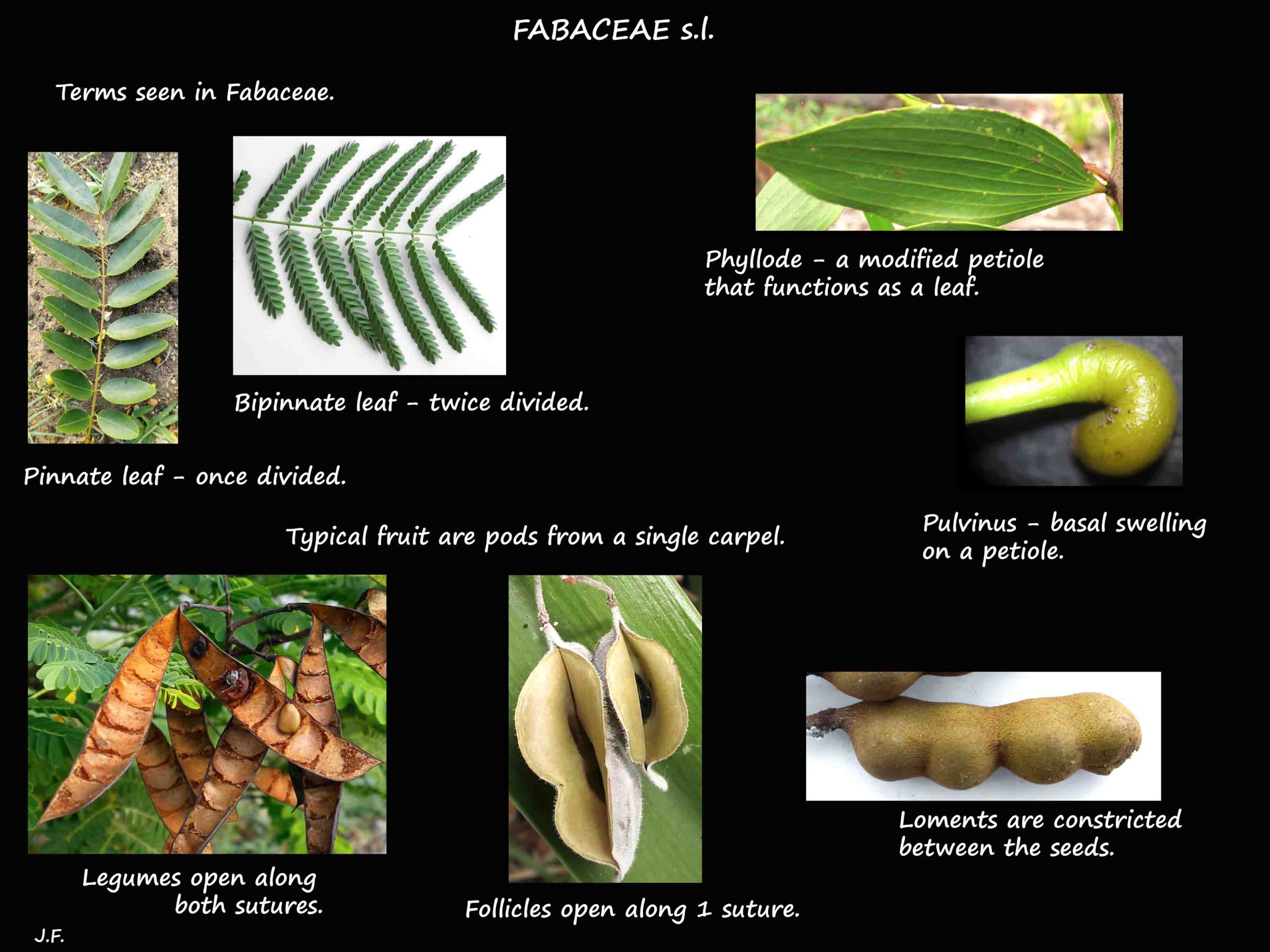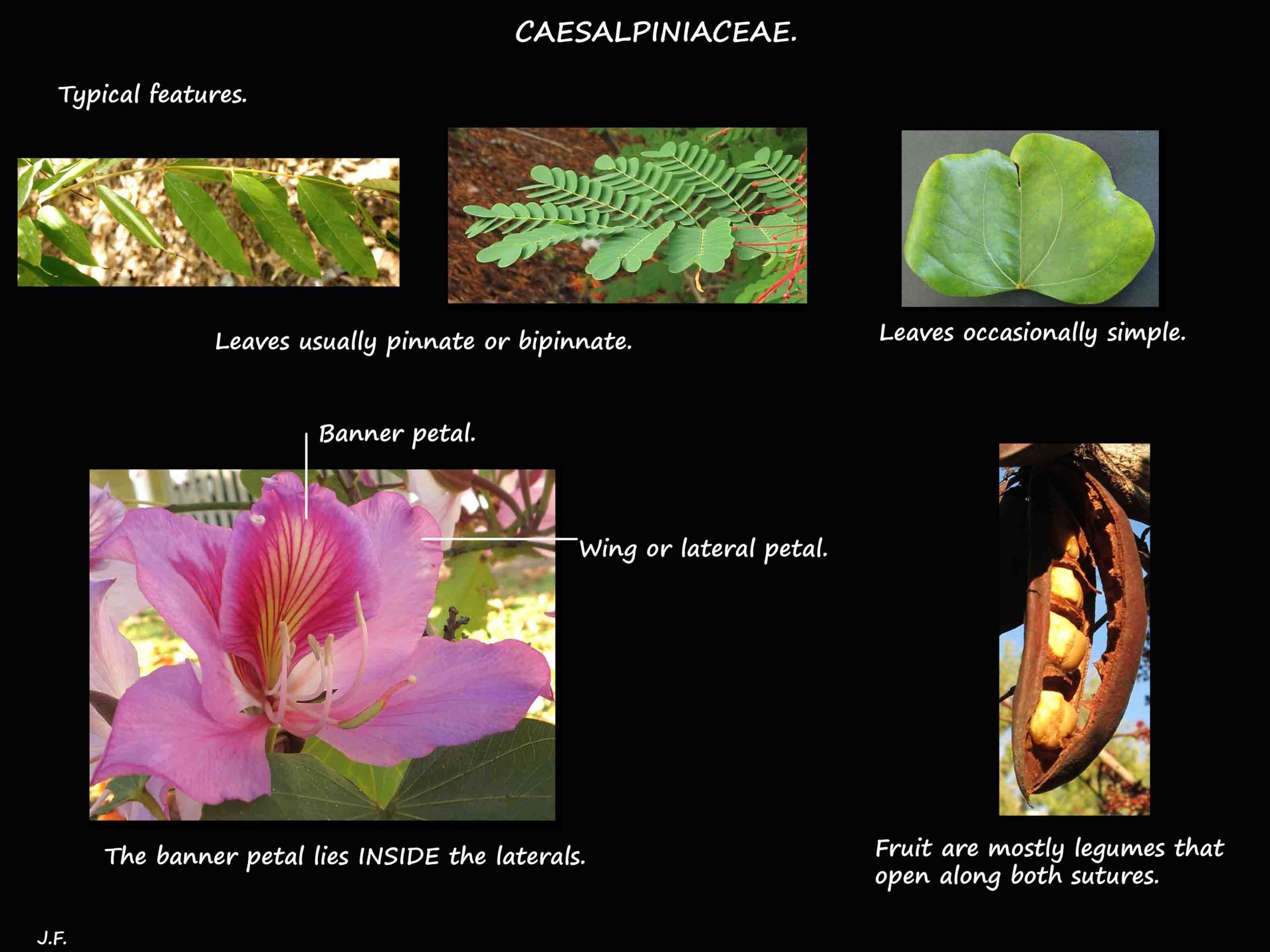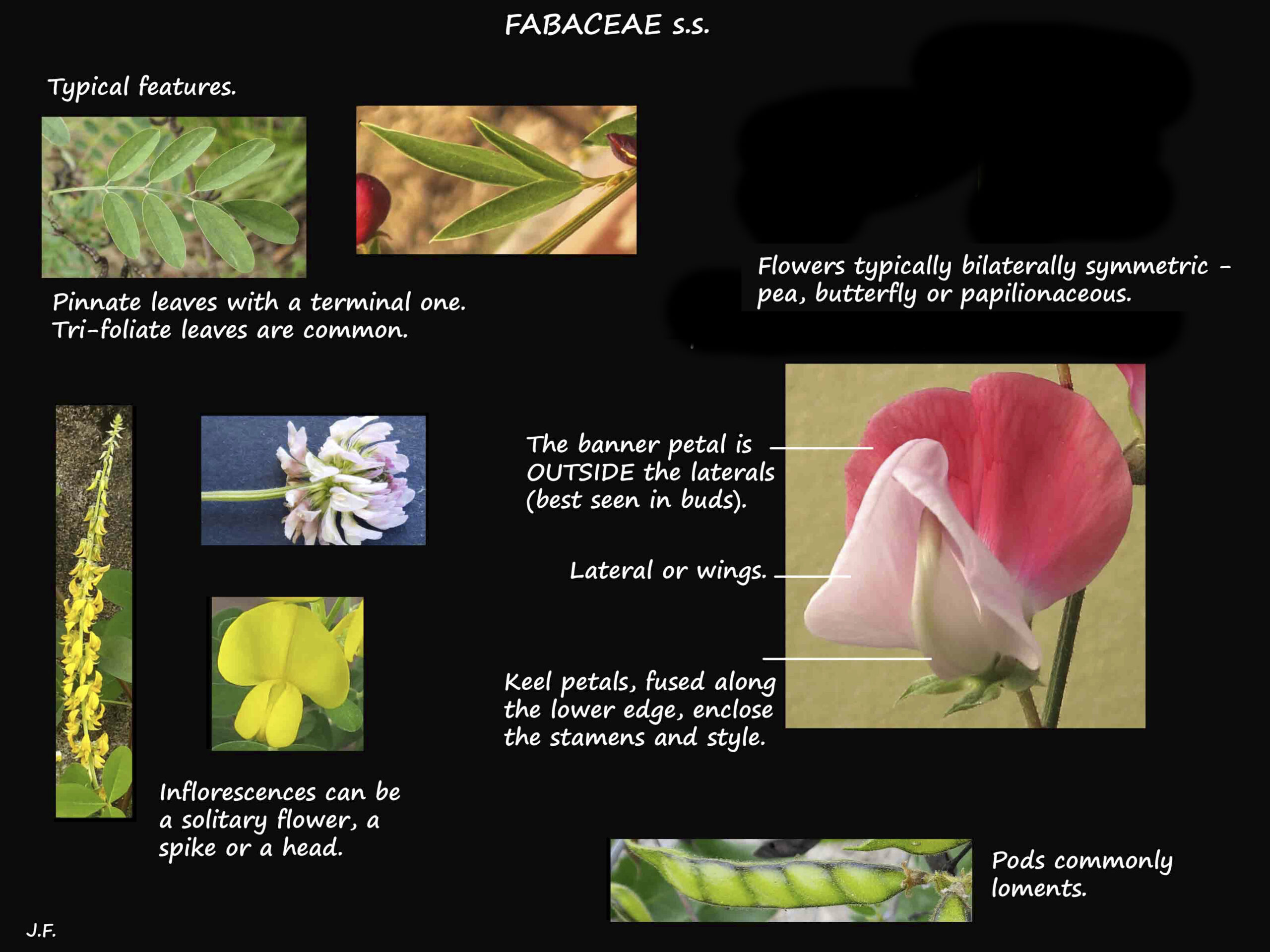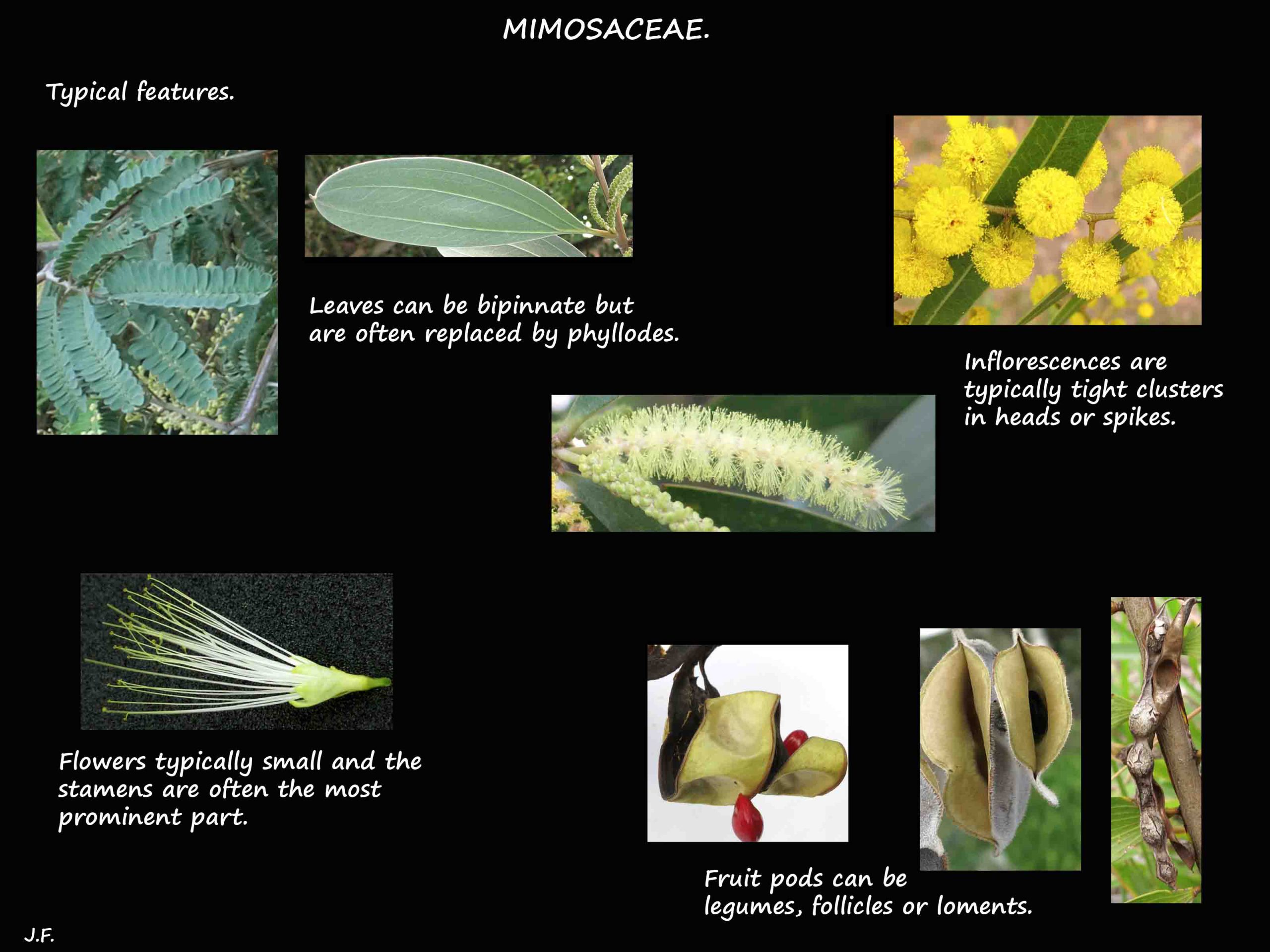Fabaceae (Leguminosae) family.
The term ‘Fabaceae’ can refer to 2 different families.
Originally Fabaceae was narrowly defined (s.s. or sensu stricto) being just 1 of the 3
pea/bean/legume families the other two being Caesalpiniaceae and Mimosaceae.
Some people still use this classification but many now use Fabaceae in a broad sense (sensu lato s.l.)
which includes the original three families reduced to subfamilies.
Family Caesalpiniaceae became subfamily Caesalpinioideae,
Family Fabaceae became subfamily Faboideae (or Papilionoideae) and
Family Mimosaceae became subfamily Mimosoideae.
The subfamilies are divided into Clades, tribes, groups etc.
Just to make it easier Fabaceae is sometimes also referred to as Leguminosae or Papilionaceae.
Loosely defined the whole pea family has around 650 (645 – 710) genera and 17,500 (17,200 – 19,000) species.
This makes it the third largest of the flowering plant families.
Because of this large number any general description of a loosely defined family is very
long and contains many variations and exceptions.
For example, plants can be trees, shrubs, lianas or herbs.
Leaves can be tiny to very large; alternate, opposite, whorled and spiral or in ranks.
They can be simple or compound and then pinnate, bipinnate, ternate or bifoliate.
Inflorescences can be terminal, axillary or leaf-opposed.
Flowers can be regular, or very irregular being pea-like or sort of pea-like.
The fruit are usually legumes but can be follicles, loments, achenes, samaroid or drupe-like.
The legume family, Fabaceae s.l. are usually recognised by their pea and bean-like fruit pods.
The strictly defined family Fabaceae s.s. can usually be recognised by the pea-shaped flowers.
Some terms seen in discussing the families.
Pulvinus – a swelling on the petiole. It is used differently by various authors to refer to a swelling
at the base of the petiole or at the top where the petiole meets the blade (or leaflets).
Changes in its vascular tissue allow the leaf or leaflets to move in response to different stimuli.
Papilionaceous – butterfly-like flowers with a banner petal, 2 wing or lateral petals and 2 keel
petals that may be fused. These are the characteristic pea family flowers.
Legumes are dry, dehiscent fruit derived from a single carpel and they usually open by splitting
along both sides as in peas. Follicles split along one side.
Loments are legumes with the pods constricted between the individual seeds.
They break up into 1-seeded segments.
Queensland, and much of Australia, uses the older, stricter classification and I will follow this
as I find it much easier to work with them as three families.
The Caesalpiniaceae or Senna family, is characterised by:
- usually trees and shrubs,
- leaves mostly pinnate or bipinnate, rarely simple,
- bilaterally symmetric flowers,
- 5 mostly free sepals and petals,
- the posterior (banner) petal is inside the 2 lateral petals and there are 2 keel petals,
- 10, or sometimes 5, usually separate stamens,
- fruit are a legume or follicle and some are loments.
The Fabaceae or Pea family is characterised by:
- trees, shrubs or climbers,
- compound leaves either pinnate or bipinnate,
- most with bilaterally symmetric flowers,
- 5 sepals usually fused basally,
- papilionaceous flowers with the banner petal outside the laterals and the 2 keel petals fused distally,
- 10 stamens either free or fused into a tube,
- 1 carpel ovary with marginal placentation,
- fruit are mostly legumes or loments.
The Mimosaceae or Mimosa family is characterised by:
- trees, shrubs and a few herbs,
- most have phyllodes replacing leaves but some are bipinnate,
- many have a pulvinus at the petiole base,
- inflorescences of heads or spikes,
- small radially symmetric flowers,
- 5 (4) sepals free or joined at the base,
- 5 (4) small, usually free petals,
- numerous stamens, usually free but sometimes basally fused,
- 1 carpel with marginal placentation,
- fruit are a legume.
J.F.





